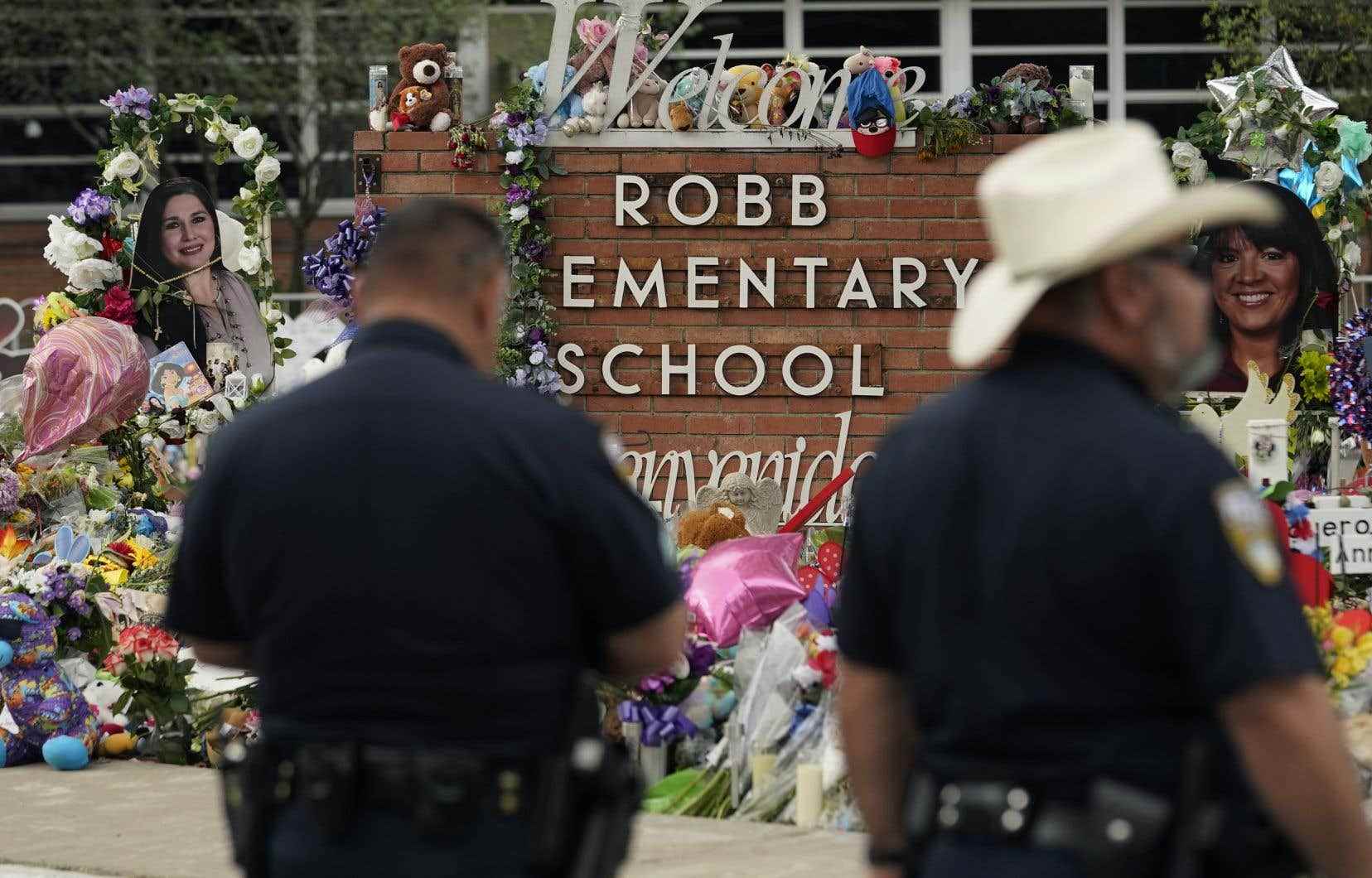Authorities had enough police at the scene of the Uvalde school shooting to arrest the shooter three minutes after he entered the building, and officers never checked to see if a classroom door was locked, argued Tuesday the head of Texas Public Safety, who describes the police response on May 24 as “dismal failure”.
Instead, police armed with rifles hovered around for nearly an hour before finally storming the classroom and shooting down the gunman, who had just killed 19 children and two teachers.
However, it turned out that the door of this classroom could not be locked from the inside, and there is no indication that the police tried to open it, while the shooter was inside, testified Col. Steve McCraw, director of the Texas Department of Public Safety. Instead, he said, the police waited for the key. “Why didn’t you probe the handle to see if the door was really locked?” asked the statewide official.
Colonel McCraw was testifying Tuesday at a Texas Senate hearing on the police handling of the May 24 tragedy at the Uvalde school. Delays in law enforcement response have been investigated by the federal government, Texas government and local government.
“Clearly not enough training has been given in this situation, plain and simple. Because terrible decisions were made by the on-scene commander,” McCraw said of Uvalde School District Police Chief Pete Arredondo.
Eight minutes after the shooter burst into the school, an officer pointed out that police had a crowbar that could be used to break down the classroom door, McCraw said. Nineteen minutes after the shooter entered, the first ballistic shield was brought into the building by police, the witness said.
Mr. McCraw told the Senate committee that Pete Arredondo had decided to put the lives of police officers before those of children.
The state’s Director of Public Safety listed to the Senate committee on Tuesday a series of missed opportunities, miscommunications and other mistakes that day:
- Chief Arredondo did not have a radio with him;
- police and sheriff radios weren’t working inside the school; only the radios of the Border Patrol agents at the scene worked inside, and they didn’t work perfectly;
- certain diagrams of the school that the police used to coordinate their intervention were erroneous.
Questions about the intervention of the police began a few days after the killing. Mr McCraw had said three days after the shooting that Chief Arredondo made “the wrong decision” when he chose not to storm the classroom for more than 70 minutes. Meanwhile, trapped fourth graders in two classrooms were desperately calling 911 for help, and distressed parents outside the school were begging the police to enter the school.
Mr. Arredondo later explained that he did not consider himself the person responsible that day — he assumed that someone else had taken control of the intervention. He declined repeated requests from The Associated Press to comment on the case.
As for the time that elapsed before the police entered the classroom, Mr. McCraw believes that “in an active shooter environment, it is intolerable […] it set our profession back a decade”.
In the days and weeks after the shooting, authorities gave conflicting and incorrect accounts of what happened, sometimes retracting statements hours after they were made. But Mr McCraw assured lawmakers on Tuesday that everything he testified was “corroborated”.
The 18-year-old shooter used an AR-15 type semi-automatic rifle.
With contributions from Jamie Stengle, in Dallas
